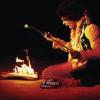-
Posts
66 -
Joined
-
Last visited
About podgorny
- Birthday October 3
Contact Methods
-
Website URL
http://www.kylemann.com
Profile Information
-
Location
Burbank, CA
-
Interests
Rapid changes in air pressure.
-
About
Recording Engineer/Music Producer.
-
Interested in Sound for Picture
Yes
-

Multi-Mono vs Multichannel plug-ins in ProTools.
podgorny replied to jgbsound's topic in The Post Place
There are specific reasons for using multi-mono or multi-channel. The obvious is that multi-mono plugins can have independent settings for each channel, but that's the the tip of the iceberg. If, for instance, you are applying reverb for surround mixing using a multi-mono plugin, you aren't allowing each channel to interact (in essence you are putting a mono reverb on each channel, so that if you pan something toward one channel, you will only be getting reverb from that channel). Sometimes this is desirable. Sometimes it isn't. A more common use for me is applying limiting to masters, specifically, when doing multiple stages of limiting. I'll sometimes use multi-mono (or unlinked L-R), followed by normal stereo limiting. This allows you to deal with some of the stray side peaks without causing the whole mix to be affected. Of course, over-use of this can make the stereo center move around, so don't overuse it. -

Unfamiliar equipment assistance...
podgorny replied to atheisticmystic's topic in General Discussion
It comes with its own mounting system. Just add saliva. -
Yup. Had them before the recoils. They DEFINITELY made things worse. Sometimes it's fun to search for solutions to imagined problems.
-
I had some primacoustic recoils. My frequency response and time-domain response were better without them - which isn't to say they don't work. They just may not always be an improvement. FWIW, I'm using SoundAnchors StudioADJR stands.
-
Several of Nuendo's developers have been with Avid for a while now.
-

Apple experiments with XL screens for tablet, smartphone
podgorny replied to al mcguire's topic in All Things Apple
Apple's greatest successes have been products that people never asked for. And many of their greatest failures have been when they try to cater to what people want. "If I'd asked customers what they wanted, they would have said 'a faster horse.'" ~Henry Ford -
I remember the transition from 6 to 7. There was no change in audio quality. As far as I recall, Digidesign kept the same audio engine throughout the life of the HD product range.
-
It was Ampex's fault, wiring pin3 hot. The UK standard was pin2, and of course now it is the standard everywhere. Of course, it doesn't REALLY matter what pin you consider "hot" as long as whatever piece of gear we're talking about puts signal out on the same pin it received the signal on. It just gets complicated when you start throwing unbalanced connections into the mix. I can see how that might be a useful devide for you to remember it, although it has no basis in how audio signals work or even why XLR connectors are named XLR Here's an interesting page about this history of the XLR http://www.soundfirst.com/xlr.html) It makes no difference whether white or blue is positive/negative. The significance of this is that if you establish a standard, you can (hopefully) avoid mistakes when building cables, and in the event of a problem you can troubleshoot more quickly.
-
12" or 19" I've only seen 12" patchbays installed in consoles.. Like this one. http://www.ebay.com/itm/Custom-Neotek-Series-IIIc-3c-balanced-TT-patchbay-Half-Normaled-Mults-/200930528296 I've also built a couple bays by building a jig and drilling holes in plastic I purchased from McMaster-Carr. This worked great for small portable racks with only a few pieces of outboard.
-
PT's audio engine has sounded great since version 6 on HD. And no one "chose PT for mixing" until recently because of the sheer SCOPE of mixing movies. Mixing in-the-box becomes a whole different ball game when you're talking about working with upwards of 500 tracks. Even now, Pro Tools HDX is the only thing that could conceivably pull that off, and that's only with PT11. I had an interesting discussion last night with Jonathan Wales (who knows way more about the post market than I do), and he said. "If pro tools went away tomorrow, there is NO APPLICATION which could take its place." Fact is, Avid is a big ship, and big ships turn slowly. But they ARE turning things around. Pro Tools 11 is a HUGE leap ahead of anything else.
-
Considering the elaborate stage and sound systems used by touring groups every day, I'd say this is a fallacy. The problem with the Wall of Sound is that it simply didn't work well (which is why Bob Heil took over with one of his systems). Since the array would not be changing, it's really a set-and-forget scenario. The problem is that using two mics pointed at the same thing with one's polarity inverted is a recipe for comb-filtered nastiness - which is to say, it doesn't work (and that include's the Grateful Dead's ill-fated attempt). The idea of using two cardioid capsules facing away from each-other to create new polar patterns is of course, a time-tested technique that is used every day (probably by people who don't even realize it).
-
The AC is superimposed on the AC. My bad. Analog synths took over my brain when we started talking about oscillators.
-
If the polar patterns and frequency responses are equal, and if gain is matched, neither is more likely to produce feedback. You're acting as if there is some unquantifiable aspect of microphones which makes one behave differently from another. In fact, we can measure these aspects, and use the data to make informed decisions about which tools we will choose for a particular application.

.png.279748a58a2b862b7aa5f3b84126e232.png)
